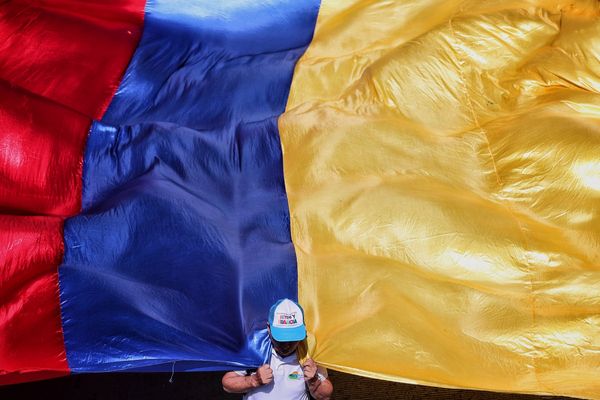
In early 1818, an unfamiliar and intriguing device made an appearance at the royal court of Udaipur, the former the capital of the Mewar kingdom (now Rajasthan). The prince of Udaipur was so enamoured by the apparatus that he described it as “Mun-ca-dowa” (medicine for the mind).
The device that captured the royal’s imagination was a camera obscura, the ancestor of modern photography. Over the next few decades, India’s royal families from Rajasthan to Tripura, embraced photography with great enthusiasm and passion. They didn’t just take photographs, but also collected and commissioned works. This is borne out by the popularity of photographic societies – the first one in India established in Bombay in 1854. The Bengal Photographic Society was established in Calcutta in 1856, with Europeans and Indians as subscribers.
One of the shining stars among the royal photo-enthusiasts was Maharaja Sawai Ram Singh II of Jaipur, who ruled the princely state from 1835 to 1880.
Ram Singh, unlike many of his contemporaries, was not only a photo-collector but also a skilled photographer. “While princes across India developed a fondness for photography, few mastered it in the way he did — or created a collection that so encapsulated a world in which the Victorian and the Indian met constructively,” writes historian Manu S Pillai.

Ram Singh’s albumen prints, the dominant technology of that era, are now part of the collection of the Maharaja Sawai Man Singh II Museum (MSMS) at the City Palace in Jaipur. And about 140 samples of the maharaja’s rich repertoire are currently on view at the Jawahar Kala Kendra, also in Jaipur, until April 30, as part of a larger exposition titled Ellipsis, Between Word & Image.
How Ram Singh first encountered photography is not known. “But in a museum publication dating to the 1980s, the then Keeper Yaduendra Sahai suggests that [British] photographer T Murray’s visit to Jaipur in 1864 provided the impetus,” writes Ellipsis’s creative collaborator Mrinalini Venkateswaran. “Murray has been described as Ram Singh’s ‘teacher’, which may be an exaggeration, but they certainly collaborated and Ram Singh would have benefited from exposure to the professional’s practice,” says Giles Tillotson, consultant director for research, publications and exhibitions at the MSMS.
Like any enthusiastic photographer, Ram Singh, who was a life member of the Bengal Photographic Society, carried his camera around with him and clicked the world he saw: people, views of Jaipur and other towns and cities. But historians say that it was portraiture that really caught the maharaja’s fancy. In 1870, for instance, he photographed Queen Victoria’s son, just as he did his palace doctor.

The most discussed aspects of Ram Singh’s work are his photographic portraits of women who lived in the exclusive zenana section of his household. To photograph such invisibles was without precedent. In a paper on the maharaja’s photographs, art historian Laura Weinstein writes that in the long history of the visual arts in Rajasthan up to 1860, portraits of women in purdah in any medium were virtually non-existent.
“Photography was by no means exclusive to the Jaipur court… among other enthusiasts were Maharana Sajjan Singh of Udaipur and Raja Bir Manikya of Tripura. But their photos of the zenana, for instance, date to after Jaipur’s,” says Venkateswaran.
The maharaja’s photography was a boldly modern act. Weinstein argues that he produced these photographs during a period of great interest in and concern over the condition of Indian women in purdah among educated Indians, colonial administrators, British feminists and other communities of the Raj.
By forging a new mode of representation of courtly women as decent dignified individuals, these photographs contested a common sentiment of the period: the notion that women in purdah were idle, sexually deviant and oppressed. Paradoxically, Ram Singh violated the most basic principle of Rajput domestic tradition and of the institution of the zenana: the invisibility of its inhabitants.
His range of work also reveals a self-reflective persona, and offers visual citations to the practitioner’s oeuvre, thereby generating a visual autobiography. “They make us consider how early photography in the subcontinent reveals a fraught and collusive relationship between the colonial context, a regional counterpoint, and the modern breakthrough of lens-based practices,” says Rahaab Allana, curator of Ellipsis.
Photographs, it is said, are worth a thousand words. Ram Singh’s are actually worth much, much more.
Follow more stories on Facebook and Twitter
First Published: Mar 01, 2019 19:45 IST







